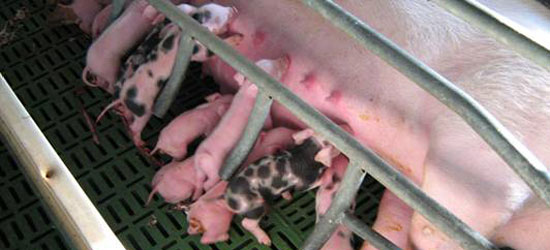
In a more specific manner, it is well known that the immunological status of the animals is determinant in the appearance of Glässer’s disease. In naïve animals, the appearance of the disease is often sudden with a high mortality. The existence of animals lacking the specific immunity against H. parasuis has increased due to the common practice of early weaning. Weaning is a stressful period for the animals, but if it is also early we may find some piglets that have not been sufficiently colonised by H. parasuis due to not having the necessary time to receive the bacterium from their mother. These piglets, when they lose the protection provided by the maternal immunity, are exposed to this bacterium which is carried by the other piglets, and they find themselves immunologically totally unprotected. Furthermore, the existence of specific pathogen free (SPF) animals and of farms with high sanitary status has provoked an increase in the prevalence and severity of many infections, including those produced by H. parasuis, mainly due to the production of animals without exposure to the agent and thus they are naïve against it. On the other hand, the mixing of animals from different origins also supposes a risk that Glässer’s disease will appear, since the animals can be faced with immunologically unrelated strains which they are not protected against.
Vaccination can also be used to improve the specific immunity of the piglets, but this aspect will be dealt with in another chapter.
Another essential factor in the development of the disease is the type of H. parasuis strains present on the farm. H. parasuis includes strains of a varied virulence: from strains with a high virulence to strains that are not pathogens. The more virulent the strains present on the farm, the higher the probability that the disease will appear. On the other hand, the existence only of strains without pathogenic capacity would greatly decrease the probability of Glässer’s disease appearing. These non-pathogenic strains could only be isolated as opportunist pathogen in circumstances of animal immunodepression or as secondary invaders after the destruction of the tissue and defences by another microorganism. Therefore, the arrival of a strain with pathogenic capacity on a farm where the animals do not have specific antibodies, whether because of a total lack of specific immunity (naïve animals) or because of a partial lack due to having antibodies against other strains which do not have a cross-reaction with the new strain, can produce the appearance of Glässer’s disease.



